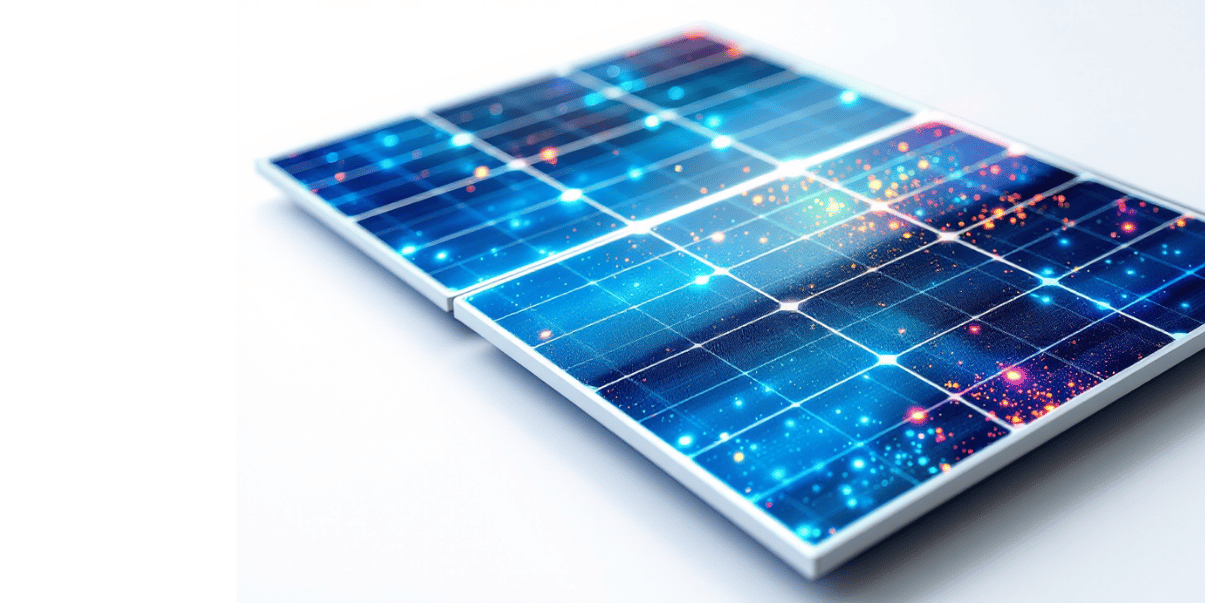
Quantum Dot Technology in Solar Cells
Quantum dots are semiconductor nanoparticles that possess unique electronic properties due to their size and quantum confinement effects. These materials can be engineered to have specific optical and electronic characteristics, making them an ideal candidate for improving solar cell performance.
1. What Are Quantum Dots?
Quantum dots are nanometer-scale semiconductor particles that exhibit quantum mechanical properties. These properties arise because the electrons within the dots are confined in all three spatial dimensions, leading to discrete energy levels. The size of quantum dots can be controlled to tune their bandgap, allowing them to absorb specific wavelengths of light, which is highly beneficial for solar cell applications.
2. Advantages of Quantum Dots in Solar Cells
- Tunable Bandgap: One of the most significant advantages of quantum dots is their tunable bandgap, which allows them to absorb a broader range of the solar spectrum. By adjusting the size of quantum dots, researchers can optimize solar cell materials for different wavelengths of light, enhancing light absorption.
- Multiple Exciton Generation (MEG): Quantum dots can generate multiple electron-hole pairs from a single photon, a process known as Multiple Exciton Generation. This phenomenon could potentially boost the efficiency of solar cells by increasing the number of charge carriers generated per photon absorbed.
- Improved Light Harvesting: Quantum dots can be integrated into various types of solar cells, such as perovskite solar cells, organic photovoltaic cells, and thin-film solar cells. Their ability to absorb light over a wide range of wavelengths improves overall light harvesting, making solar cells more efficient.
- Low-Cost and Flexible Fabrication: Quantum dots can be synthesized through low-cost methods such as colloidal solution processing. This allows for the production of flexible, lightweight solar cells, which is advantageous for applications in portable electronics or building-integrated photovoltaics.
3. Types of Quantum Dot Solar Cells (QDSCs)
There are several types of solar cells that incorporate quantum dot technology:
- Quantum Dot Sensitized Solar Cells (QDSSCs): These are similar to dye-sensitized solar cells, where quantum dots act as the light-absorbing material. The quantum dots are typically embedded in a mesoporous material, allowing for efficient charge transfer.
- Quantum Dot Solar Cells (QDSCs): In this type, quantum dots are used as the active material in the absorber layer of the solar cell. These can be either hybrid or all-inorganic systems. Hybrid systems combine organic and quantum dots, while all-inorganic systems use quantum dots exclusively.
- Perovskite Quantum Dot Solar Cells: Perovskite materials combined with quantum dots have become a focus due to their high efficiency and stability. Quantum dots in these devices help to absorb light more efficiently and improve the charge transport properties.
- Colloidal Quantum Dot Solar Cells: These cells are based on quantum dots suspended in a liquid medium, which are then deposited on a substrate to form the active layer of the solar cell. These cells have the potential for large-scale, cost-effective manufacturing.
4. Challenges and Limitations
Despite the promising advantages, there are still several challenges associated with the use of quantum dots in solar cells:
- Stability: Quantum dot-based solar cells face stability issues, as quantum dots can degrade when exposed to air, moisture, or high temperatures. Research is ongoing to improve the longevity and robustness of these devices.
- Charge Carrier Extraction: Efficient charge extraction from quantum dots remains a challenge. The electronic interface between quantum dots and the electrode materials must be optimized to ensure the effective collection of photogenerated charges.
- Scalability: While quantum dots can be synthesized at the laboratory scale, scaling up production for commercial solar cells remains an obstacle. Efficient, large-scale manufacturing methods need to be developed.
5. Recent Advances and Future Directions
Recent research has focused on:
- Hybrid Quantum Dot Systems: Combining different materials with quantum dots, such as perovskite and organic semiconductors, to take advantage of their complementary properties.
- Surface Passivation: To improve the stability and charge extraction, surface passivation techniques are being developed to protect the quantum dots from degradation.
- Quantum Dot Solar Cell Efficiency: Researchers are working on increasing the efficiency of QDSCs by improving the size uniformity of quantum dots, enhancing light absorption, and improving the charge transport properties.
- Integration with Existing Solar Technologies: Quantum dot technology is being integrated with existing solar technologies like silicon solar cells and perovskite solar cells to create hybrid devices that combine the benefits of both technologies.
6. Conclusion
Quantum dot technology holds immense promise for the future of solar energy. By improving the efficiency of solar cells through enhanced light absorption, multiple exciton generation, and tunable properties, quantum dots could revolutionize the solar power industry. However, overcoming the challenges related to stability, scalability, and charge extraction will be key to realizing their full potential.
Quantum dot-based solar cells could play a pivotal role in advancing clean energy technologies, offering low-cost, high-efficiency solutions for sustainable energy production in the future.
If you’re looking for more specific details or research papers, I can help you find them through academic sources or databases!
